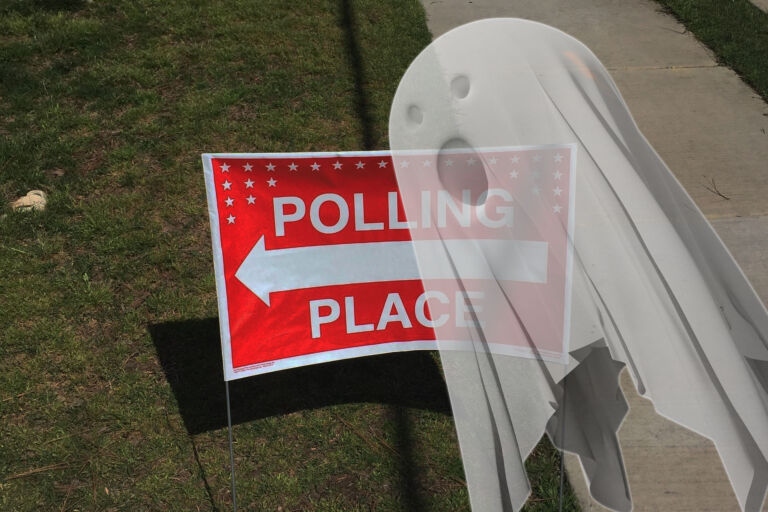In order to enlist the support of the Wake County cities and towns, the Wake County manager David Cooke and the Triangle Transit Authority (TTA) CEO, David King have been visiting town and city councils with a 30 minute presentation about the Wake County Transit Plan.
We at the John Locke Foundation have been concerned that the transit discussions in the Triangle have been dominated by misleading, distorted, and incomplete information. TTA and the area transit supporters want the Wake County Commissioners put a half cent sales tax on the November ballot for voter approval and it seems they will torture the facts to get that result.
Several towns have been accommodating in giving me time to discuss the JLF report "Review of Wake County Transit Plan" by retired UNC-Charlotte professor of transportation studies Dr. David Hartgen and Thomas Rubin, a California based CPA.
Apex, Fuquay-Varina, and Zebulon offered me time to make my presentation, which I kept well under the 30 minutes given to King and Cooke for their presentation. At the Wake Forest meeting, I was interrupted by one commissioner who had sharp and probing questions, but that is what this discussion is all about and it leads to a full airing of the issue.
Other towns have been less willing even to listen to criticism of this plan. The mayor of Raleigh ignored my request for time following the King and Cooke presentation and I was required to make my comments at a subsequent council meeting where I was limited to three minutes. In Wendell, I was initially offered 3 minutes during the public comment period at the same meeting that King and Cooke made their 30-minute presentation. I opted to come back to another meeting and was given seven minutes. This is hardly enough time to cover the numerous problems in the Wake County Transit Plan.
My follow-up email to the Wendell mayor and commissioners follows:
Dear Wendell Mayor Hinnant and Town Commissioners,
Thank you for the opportunity to address you on the deficiencies of the Wake County Transit Plan. It was unfortunate that your time limit rules do not allow a full airing of the weaknesses, distortions, and omissions in the Wake County Transit Plan. It is impossible to correct the 30 minutes of distortions provided by Wake County Manager David Cooke and TTA CEO David King in the seven minutes you provided me. Other town commissions in the county have been much more open to a full, open, and fair discussion of this important issue that faces the residents of Wake County.
Therefore, please allow me to reiterate some of the problems with this transit plan:
The missing costs make this plan a blank check. Before you and your citizens vote on this plan, you need to demand a full accounting of all of the costs including the $2.1 billion to continue the current service levels, the costs to add ADA services required by the federal government, the costs of 20 percent spare vehicles required by the federal government, and the costs to use of the existing CSX, NS and NCRR tracks including the possible cost of double tracking all of their routes so that the commuter rail does not interfere with their freight and passenger operations.
Before you vote on this plan, you and your citizens need to have assurances that the cost overruns experienced by the Charlotte LYNX line will not be repeated with this light rail line. Charlotte’s cost over run was about double the initial cost estimate.
Before you vote on this plan, you and your citizens need to consult qualified academic economists who will explain that the sales tax increase used to fund this plan does not create jobs; it merely moves them from the private sector to the public sector for a net loss of jobs. The jobs in shops and restaurants around rail stations are not a net addition of jobs. They are jobs that would have been created elsewhere in the area. Thus the plan makes some property owners’ land values increase dramatically while decreasing the land values of other citizens in the county. What theory of "justice" does a town commissioner use to justify the use of a government policy to make some landowners wealthy at the expense of other landowners in the county?
Before you vote on this plan, you and your citizens need to have TTA explain how operating buses with an average of five passengers will reduce per passenger mile energy use in the county. Data from the National Transit Database show that thirteen bus services in the state currently use more energy per passenger mile than the average car and the average of these bus transit services uses more than three times the energy per passenger mile than the Toyota Prius. Since it is highly likely that the energy per passenger mile under this plan will increase dramatically, how will this wasteful consumption of energy benefit the residents of Wake County?
Before you vote on this plan, you and your citizens need to recognize the implication of the fact that during the last decade, according to the Census American Community Survey, close to 80 percent of all new households chose to settle in single-family homes. In other words, this plan is based on increasing the population density of the county, which is currently too low to justify any type of rail transit. While some development will occur around rail stations, it will be miniscule compared to the 80 percent of households that are demanding single-family homes in low density parts of the county. How do transit officials and town commissioners justify implementing an extremely expensive rail transit plan that serves a tiny minority when about 80 percent of the residents want to reside in single-family homes and want the convenience of their autos for mobility?
Before you vote on this plan, you and your citizens need TTA to explain how even the slightest reduction in congestion will occur when this plan will likely carry less than one percent of all of the motorized passenger trips in the county. Of the 22 major US cities that have rail transit, only one carries more than three percent of the trips and 16 of the 22 carry less than one percent. According to the latest figures from the National Transit Database, Charlotte’s LYNX system carries 0.07 percent (that is 7/100s of one percent) of all of the motorized passenger travel in the Charlotte area. It is highly likely that the Wake County light rail and commuter rail service will have a similar result. How will this imperceptible reduction in auto travel alleviate traffic congestion and the need to fund alternative congestion relief, especially since more than $4.6 billion will have been wasted on a system that does not relieve congestion?
I would appreciate the opportunity to engage in an honest and open dialogue about this important issue that faces you and your town residents. I am available to answer your questions and discuss this matter more fully at your convenience.
Dr. Michael Sanera
Director of Research and Local Government Studies
John Locke Foundation
Click here for the Local Government Update archive.


